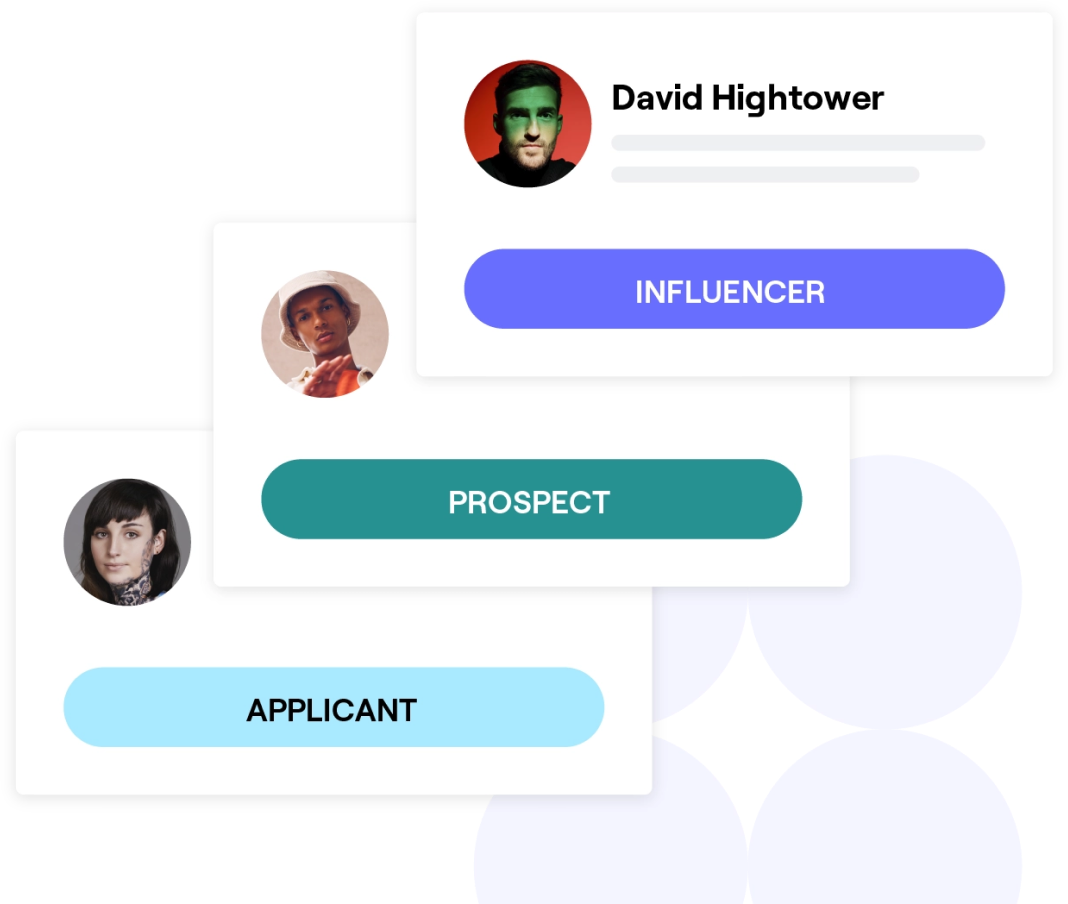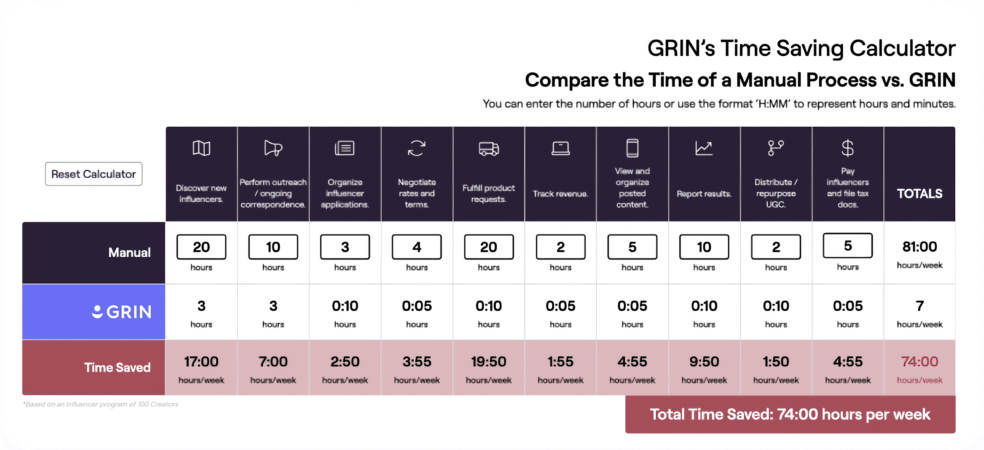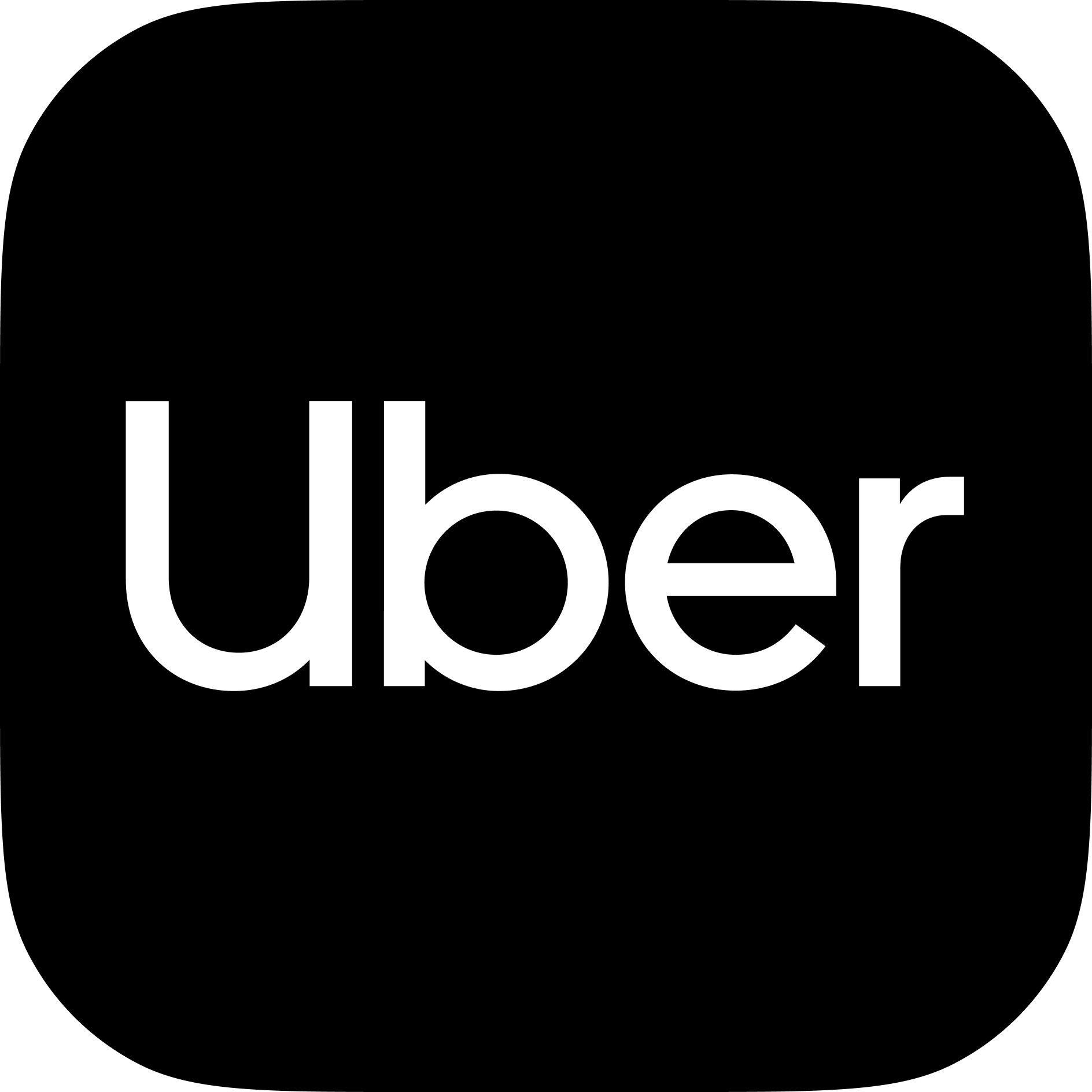Brands that leverage social media successfully have the luxury of always being a part of the online conversation. Not only do they have a direct line to consumers, but they also have the opportunity to establish themselves as industry experts through helpful and informative content.
But developing an effective social media strategy is easier said than done. Brands can’t simply take a “pay and spray” approach where they buy multiple ads and hope the spots end up in front of the right eyeballs. Lucrative social media strategies take time and research. Marketers must collect enough data to ensure they engage the right audience and spend resources on the avenues that drive the highest ROI.
What is social media marketing?
Social media marketing uses one or more social media platforms to build brand awareness, drive sales, increase website traffic, or promote a product or service to a target audience.

Social media marketing is an excellent way for companies to tell their brand story, engage their fans, and educate consumers on new products or industry trends. This form of word-of-mouth marketing also allows brands to empower customers to post user-generated content (UGC)—e.g., online comments, product reviews, etc.—which engages audiences far more effectively than brand-produced ad copy.
Does my business need social media?
Yes.
There are currently 3.96 billion active social media users. That’s more than half the world’s population. And of those 3.96 billion people, each one spends more than 30 minutes per day scrolling feeds, online shopping, and engaging with their favorite content creators.
With so much attention paid to social media, it doesn’t matter if you’re a B2B firm targeting top executives or a B2C brand chasing Gen Z consumers—your audience is online.
But for the ultimate competitive advantage, brands must effectively leverage social media content marketing. Optimized content marketing paired with a strategic social media approach is a powerful combination—one that will maximize your digital marketing ROI.
What is the best social media marketing plan for my business?
Each social media platform has the potential to help your brand in various ways. Before choosing one, do some research to determine on which platforms your target audience lives. Then you can pick the ones with the tools best suited for your campaign goals.
Here is a closer look at each.
Instagram has roughly 130 million users in the U.S., and more than half of them are millennials. Researchers expect the total number of Instagram users to grow to 136 million by 2025.
Pros
- Access to nearly every ad type
- Intuitive audience targeting features
- Highly creator-friendly environment
- Advanced ad analytics
- Clickable “sticker” links in stories (formerly “swipe-ups”)
Cons
- Paid ads can be expensive for smaller businesses
- You may need a Facebook Ads Manager expert to achieve the best results
YouTube
Google runs YouTube Ads, giving brands access to vast buyer data and analytics fed by the leading search engine in the world. Because you’re advertising on a strictly video platform, you don’t have quite as many ad design options as you do with Facebook and Instagram. But considering the volume of active YouTube users, the lack of ad design options is hardly a setback.
Pros
- Access to the following ad types:
- Video
- Overlay
- Interactive, polling
- Access to advanced targeting and analytics features on Google Ads workspace
- Massive reach potential
Cons
- Easily skippable ads
- No opportunity for static content
- Can’t select which videos your ads play before
Facebook is by far the most popular social media channel in the U.S., with 302.28 million users in 2021. But as social media’s “elder statesman,” the platform has lost some of its allure over the last decade.
Pros
- Access to nearly every ad type
- The most popular social media channel
- It’s free to start a Facebook Business page
- Brand ambassadors can easily tag your business
- Easy-to-measure results
Cons
- The share of marketers using Facebook is on a downward trajectory
- Lots of spam and fake accounts
- Facebook ads can be expensive
- Algorithm works against brands
For better or worse, Twitter is perhaps the platform best known for starting conversations online. It also has a campaign creator tool that allows users to target audiences and build ads using different content styles and CTAs.
Pros
- Access to the following ad types:
- Video
- Image
- Interactive/polling
- Intuitive audience targeting features
- Strong ad analytics
- Text-focused ads perform better on Twitter than other platforms
Cons
- Character limits
- Not the most user-friendly platform
- Poor conversion tracking
TikTok
TikTok might be the newest player on the list, but it is also the fastest-growing, with more than 1 billion active users worldwide. Businesses using TikTok can also sign up for an ads manager account and enjoy features similar to Facebook Ads Manager.
Pros
- Access to the following ad types:
- Video
- Collection
- Interactive/polling
- Access to a younger audience
- Short-form video is on the rise
- User-friendly management dashboard
Cons
- Ideal for customers under 30
- One of the most expensive platforms for advertising
- Limited content format options
10 ways to leverage social media for your business
1. Post on relevant social media networks
Brands often assume they need to be present on every platform to have an effective social media strategy. But in reality, brands only need to be where their target audience lives.
Each platform has unique tools and features, but not all of them will suit your needs. First, figure out which platforms align well with your business. Then you can focus your time and resources on the channels that will drive the highest ROI for your program.
2. Optimize content for each platform
After choosing the right platforms, you need to select content best suited for each. Photo and video content are the most valuable for achieving social goals, but marketers must still strategize where, how, and when to post them.
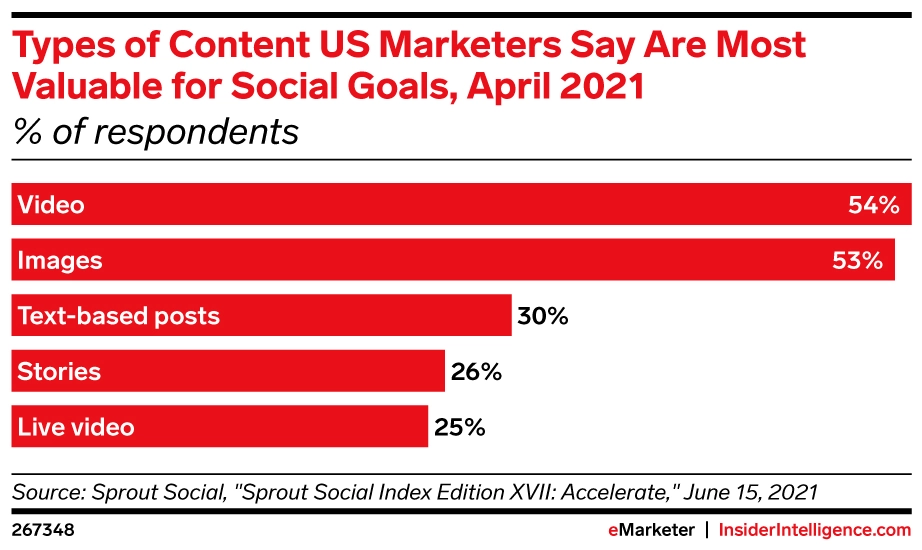
While it’s unnecessary to post on every channel, most successful brands are active on more than one. They might post video content on Facebook and YouTube to showcase the stories of their clients and employees. Instagram, meanwhile, might be used to capture eye-popping static images and share facts and updates about the company.
3. Be consistent
Consistency is critical for successful social media content marketing.
Create a schedule that outlines when to post and considers the types of content and frequency of posting that audiences are most likely to engage with. Software like Hootsuite and SocialPilot can help automate posting according to your content calendar, so you don’t have to worry about manually uploading each post.
Remember, consistency goes beyond just making regular posts. You should also be consistent in your brand’s messaging, tone, and aesthetics across all social networks.
Pro Tip: Brands often overlook the style of their uploaded images. Decide on a particular color scheme or filter for your photos, and use the same edits to maintain consistency.
4. Engage followers
The best way to organically grow your social media reach is to interact with your followers and influencers. Meaningful interaction can be as simple as liking your followers’ posts and pages on Facebook or thanking them in the comments when they share your posts. Social media content marketing is all about forging lasting relationships with your followers and even a seemingly minor gesture goes a long way to establishing brand loyalty.
One of the ways GoPro engages is by amplifying the voices of their followers and influencers through shared posts. Check out this gorgeous photo from one of their influencers, which they reposted on the company’s main Facebook account.
5. Use influencer marketing
Studies show that influencers produce 11 times more ROI than any other marketing approach—one of the many reasons experts believe influencer marketing will become a $15 billion industry in 2022.
Partnering with social media creators is one of the best ways brands build an authentic relationship with consumers. Influencers have dedicated followings of people who trust their recommendations for new products and services. Plus, these creators produce studio-quality content (for a fraction of the price) that brands can repurpose across all relevant social media platforms.
You’ll have the most success with influencer marketing when you find a creator who aligns with your mission and values. When they use your products, love your brand, and believe in both, they will have no problem providing you with honest endorsements.
6. Pay to promote your posts
The organic reach of social media content is getting increasingly harder to come by. Partnering with influencers is one great way to boost your reach, but paid promotions are now crucial to successful social media strategies.
Paid advertisements help you target specific audience groups to share your content with. This increases your reach, visibility, and brand awareness. A paid ad also typically includes a call-to-action button within the ad creative. Be sure to track audience responses and engagement rates on these ads to optimize your campaign performance.
Pro Tip: Remember: Paid social media content marketing doesn’t work the same way on every network. Facebook ads are different from Twitter ads, etc. You will need to customize your strategy for each platform.
7. Balance promotional and helpful content
Resist the urge to promote and talk about your product online constantly. Social media content marketing is about creating content that the users will find helpful when they’re ready to make a purchase decision.
The best way to grow your brand organically is to have customers come to you rather than the other way around. You accomplish this by earning a reputation for being a trustworthy authority in the industry. By creating content like tutorials, product reviews, and industry thought leadership in general, you’ll see a drastic rise in your followership.
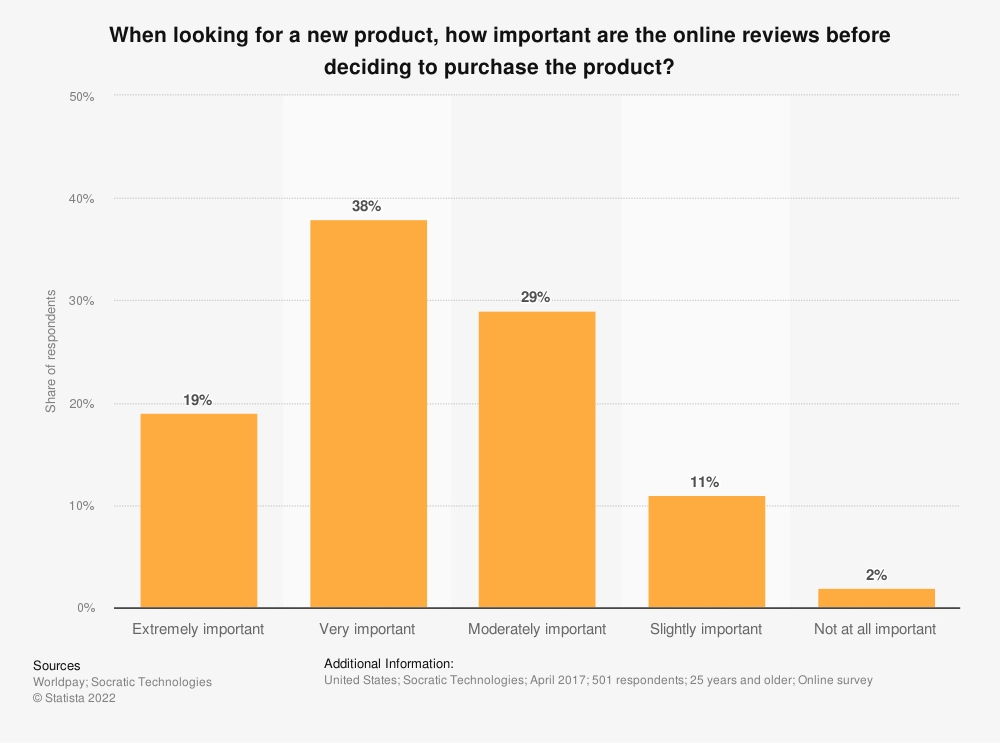
Statista reported that 38% of respondents found online reviews “very important” in making a purchase decision, while 19% found them “extremely important.” Accumulating positive reviews on your product or service is another excellent way to build your brand reputation and establish yourself as an industry authority.
8. Offer rewards
Offering rewards to your social media followers through giveaways, challenges, and other promotions is a great way to increase engagement and create a fun buzz around your brand. Brands usually need only a small investment for most reward programs, but it can lead to massive returns and even “viral” status when done effectively.
@micahcow Had to upgrade my shoe game with @dsw Share your spring shoes using #DSWCutLoose + #DSWcontest for a chance to win a $200 DSW gift card! #ad ♬ Footloose – Kenny Loggins
A prime example is DSW’s #DSWCutLoose challenge. The shoe retailer asks followers to film themselves dancing to the Footloose soundtrack and post the video on social media for a chance to win a $200 gift card. The company invested just $2,000 in prizes while the video submissions accumulated more than 8 billion views on TikTok.
9. Learn as much as possible about your audience
Use social media to learn everything you can about your target audience. Tools like Facebook and Instagram Insights, Twitter Analytics, and Google Analytics help determine which platforms give you the most engagement. But more importantly, you discover your users’ genders, locations, ages, interests, and a lot more.
Social listening tools are a helpful way to listen in on consumers’ online conversations about your brand, even if they don’t tag you in the post.
10. Analyze and optimize
There are two things to consider when it comes to analysis and optimization.
First, you must regularly analyze your social media content marketing metrics to gain insights into your social media activity. By figuring out what’s working and what isn’t, you’ll save valuable resources and increase your ROI.
Secondly, you must consider your brand’s and your influencers’ outreach. Remember, it’s not enough to simply collaborate with influencers. To make the most of your influencer marketing program, you need the right creators for your program.
A creator management platform alleviates these pain points.
An effective platform allows you to filter influencers based on their relevance to your social networks, category, engagement rates, and fan following to find the right creators to recruit into your social media content marketing strategy. The creator management platform should also help you track and analyze key data so that you can find actionable insights from your influencer campaign.
At the end of the day, you’ll quickly zero in on a strategy that works best for you. You’ll also be able to optimize your existing social media content marketing efforts to grow your business further.
Social media marketing examples from successful brands
1. National Geographic
National Geographic implements a perfect blend of fun and education into its social media strategy. One of the most successful ways NatGeo boots engagement is by occasionally reposting the work of amateur photographers on its main page. This leads to hundreds of amateur photographers tagging the brand daily from their personal accounts.
NatGeo ran a successful collaboration and #Lookingup awareness campaign with Prince Harry in 2019. The project asked fans and professional photographers to snap their favorite tree at an upward angle “to raise awareness for the vital role trees play in the earth’s ecosystem.” The Duke of Sussex then picked his favorites to post on the National Geographic main account and the Sussex Royal Family account.
2. Dunkin’
@charlidamelio my @dunkin obsession…but make it merch!! coming tomorrow 3/30, 3pm est🧡 shopdunkin.com #ad ♬ original sound – charli d’amelio
Dunkin’ dominated TikTok in 2021 and owes much of its success to its collaboration with social media megastar Charli D’Amelio. Dunkin’ leveraged Charli’s massive social media following to gain the adoration of Gen Z consumers and grow its TikTok audience to more than 3 million followers. And because Charli was also a loyal brand fan, she had no problem giving Dunkin’ honest product endorsements on more than 120 of her posts.
3. Dove
Dove empowers its fans as much as any other major brand. The company’s mission is to break down unrealistic beauty standards and prove that beauty comes in all forms. Dove’s willingness to uplift women from all different backgrounds has helped it build enormous trust and loyalty among millions of consumers.
Dove has run many successful campaigns like its current #NoDigitalDistortion movement to help share women’s stories and amplify their voices.
Conclusion
Leveraging social media helps brands engage, educate, and excite customers. Keep in mind that consumers want to find a brand that resonates with them.
But it’s your job to find these people.
Do as much research as possible before rolling out your content marketing strategy so you can determine who to target, where they live, and what compels them to take action. Only then can you develop an approach that genuinely connects with online audiences.
Are you ready to stake your claim in the creator economy? Discover more helpful tips and resources from the experts at GRIN: Creator Management Learning Center







